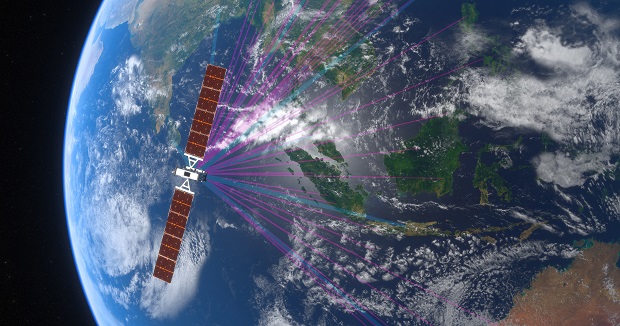Satellite operator SES and space consulting firm Northern Sky Research (NSR) held a virtual roundtable on Wednesday, June 22, to highlight the potential of SES’ Medium Earth Orbit (MEO) satellites to increase connectivity across the Philippines.

According to the Department of Information and Communications (DICT), an estimated 40% of Filipinos remain unconnected to the Internet today, especially in rural and underserved areas. Satellites are considered ideal solutions when connecting these areas due to their practical set-up and their resilience in the face of natural disasters.
MEO satellites orbit at altitudes of 8,000 to 20,000 km above the earth’s surface. MEO satellites have a slightly higher latency or time to deliver data than Low Earth Orbit (LEO) satellites. MEO systems, however, require less satellites to deliver stable internet connectivity, need less gateways, and have a higher throughput or capacity delivered.
During the roundtable, SES noted its existing MEO O3b system is the world’s first and only commercially successful non-geostationary satellite system. It has been delivering low-latency, high-performance connectivity worldwide since 2014.
Rob Marabut, SES director of business development, stressed: “The main advantage that MEO brings is that it’s in the sweet spot… we have a large enough coverage where relevant areas — like the entire Philippines. We can cover with MEO beams unlike LEO satellites which could be more difficult because of the [less] number of beams.
Additionally, Marabut announced that the improved connectivity services of their next generation O3b mPOWER MEO satellites will be available in the Philippines by Q1 2023. These satellites can deliver more than 1 gigabit of capacity to any site in the country with a relatively low latency of 150 milliseconds while relying on only one gateway.
In this way, SES O3b mPOWER satellites can widen the country’s deployments of 4G and 5G mobile requirements to remote areas and support a variety of Filipino customer requirements from telcos to government to disaster recovery to e-learning and e-health with minimal set-up.

The increased attention of satellite operators is expected as the government pushes policies such as EO 127 and R.A. 11647 that ease satellite operators’ entry into the country. SES, however, isn’t the first satellite provider to jump at the opportunities in the Philippine market. In May this year, Satellite operator Starlink’s Philippine subsidiary already received the permit to provide broadband Internet connectivity through its LEO satellites.
Currently, LEO satellites that orbit the earth at altitudes of less than 1000 km are the most commonly pitched technology by satellite providers aiming to enter the Philippines.
When asked about how this competition will affect SES’s operations, Marabut noted: “We believe that each technology will have their own niche. There are specific uses where each one has the advantage. We personally believe that we have a sweet spot that we can operate in based on the latency and also throughput advantages that we have and the fact that we are putting one, just one gateway in the Philippines, not multiple, and that we can blanket cover the entire Philippines on the O3b mPOWER beams”
“Again, we believe MEO has a distinctive advantage over this in terms of throughput for example…provide 1 gigabit of capacity even 500 mega[bites] are not possible on both GEO and LEO,” Marabut stated.




